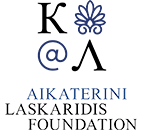Byzantine architecture (276 Subjects)
Map of Istanbul.
Elevation of the colonnade of a reservoir near Philoxenus Cistern, Istanbul. 2. Plan of said reservoir. 3. Vertical section of Egri Kapi reservoir. 4. Vertical section of Pera reservoir, at the site of modern-day Taksim square, named after the cistern (Taksim = cistern). 5. Plan of Pera reservoir.
1. The aqueduct of Kemer Burgas at the area of the same name. 2. Elevation and vertical section of part of the aqueduct. 3. Architectural instrument used to measure the ground for the construction of aqueducts. 4. Aqueduct of Mahmud I at Petra (Bahceköy). 5. Vertical section of Bahceköy aqueduct.
1. Section of Çukur Bostan, a system comprised of seven open-air cisterns of the Byzantine era. 2. Elevation and vertical section of one of the walls of Çukur Bostan. 3. Columns, plans and architectural features from Philoxenos Cistern, Istanbul.
The Hippodrome of Istanbul with the mosque of Sultan Ahmed I. Hagia Sophia on the left.
The fortresses of Europe and Asia on the Bosporus. In the foreground, the fountain of Küçüksu or fountain of Mihrisah Sultan, near the location of Sweet Waters of Asia (today Göksu Deresi).
View of Hagia Sophia square and the fountain of Ahmed III.
Panoramic view of Istanbul from Pera. In the background, from left to right, Topkapi place, Hagia Sophia and the mosque of Sultan Ahmed I.
Heidentor, Roman triumphal arch o thef era of Constantine II (4th century CE), in the city of Carnuntum, today Petronell, in Austria.
The monastery of Panagia Olympiotissa at Elassona, Thessaly.
View of the city of Corfu.
View of Istanbul from Scutari (Üsküdar). On the left, Hagia Sophia and Topkapi Palace.
Hagia Sophia, Istanbul.
Affluent women of Istanbul. Panoramic view of Istanbul. Women of the imperial harem.
Map of the area of Corinth. Plan of Acrocorinth castle.
Ancient Corinth from the South.
View of Ancient Corinth with Acrocorinth.
View of Acrocorinth.
View of Acrocorinth.
View of Acrocorinth.
Plan of the fortress of Patras.
View of Patras.
View of Kyparissia, Peloponnese.
Map of Maini castle on Cape Tainaron.
Map of Istanbul.
Map of Istanbul, showing some of the city's main sights: A. The Plataean Tripod at the Byzantine Hippodrome B. The Column of Arcadius C. The Patriarchate of Constantinople D. The church of Hagioi Apostoloi, Istanbul. E. Atik Mustafa Pasa Mosque at the area of Vlacherna, initially a church built in the Byzantine era; its original dedication remains unknown. F. Cannons used in Suleiman I's campaigns to Belgrade, Rhodes and Budapest.
Plan of Hagia Sophia at Istanbul.
Map of the area of Ancient Corinth. Plan of Acrocorinth castle.
View of Ancient Corinth and Acrocorinth.
View of Acrocorinth.































